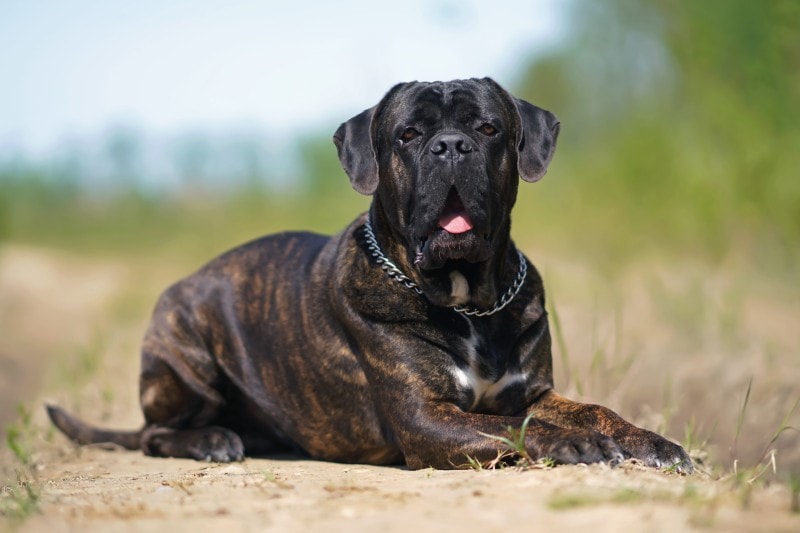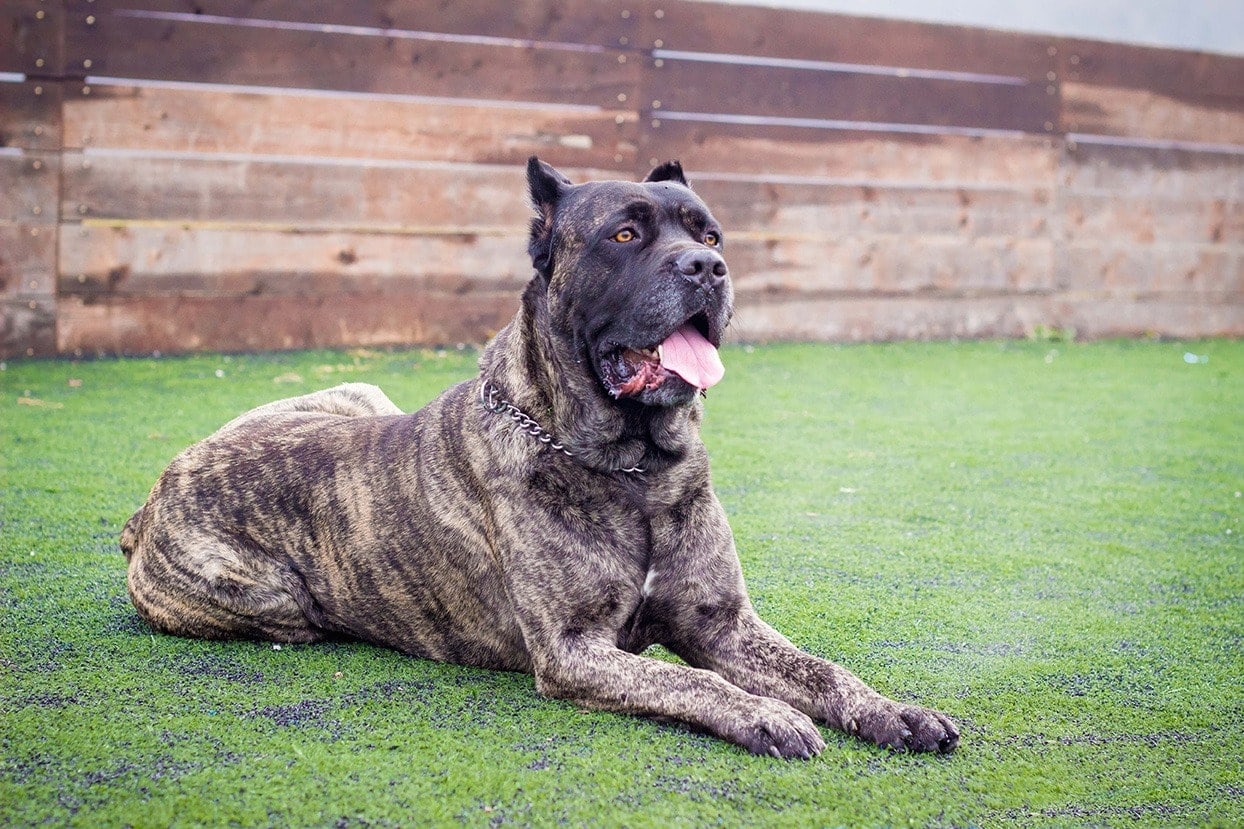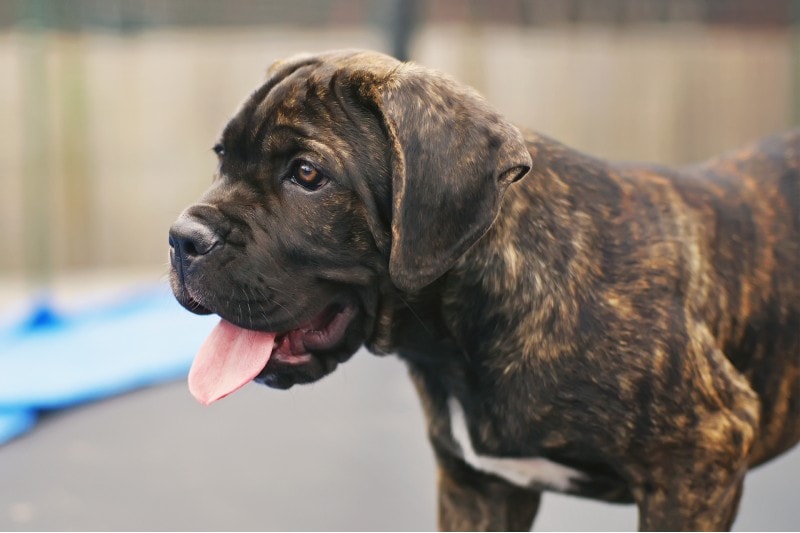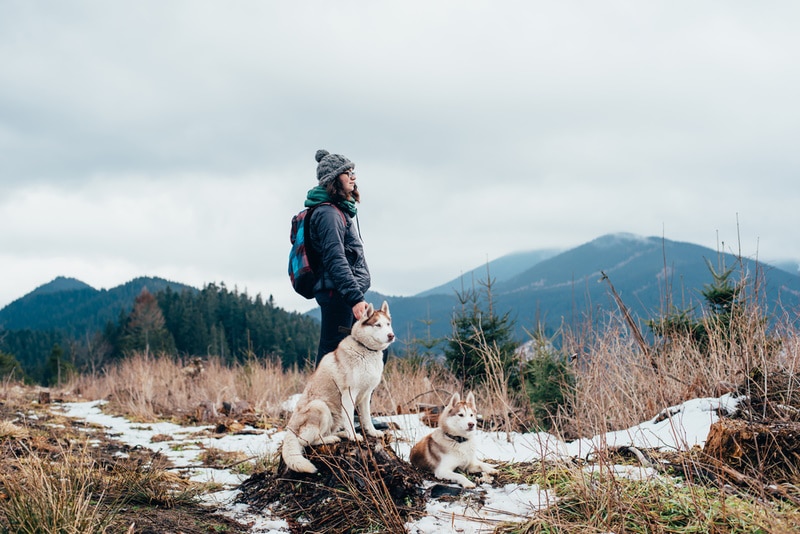Brindle Cane Corso: Pictures, Facts & History
Updated on

The Cane Corso has an intense and glorious history that should be both applauded and admired. Not every breed can claim fame by fighting alongside fellow soldiers in ancient Rome by carrying buckets of flaming oil.
The Cane Corsos have fought their way back from near extinction to become a recognized breed that wins our hearts just as quickly as they do top spots in shows. Their appearance and personality prove their protective nature, but there’s more to the brindle Cane Corso beyond their subtle stripes and quietly domineering nature.
The Earliest Records of the Brindle Cane Corso in History
The Cane Corso can be traced back to ancient Italy, with roots as far back as the Macedonian Wars before the fall of Rome in 476 A.D. They are a cousin to the Canis Pugnax or the Roman Molossian, which is an extinct breed thought to be the forefather of all Mastiffs we see today. Through breeding, the Cane Corso and more domineering Neapolitan Mastiff became two distinct but no less courageous soldiers fighting the front lines.
In their earliest days, the Cane Corso was a fierce protector. The dogs were used as guardians both for personal protection and in battle. After the wars, they found their usefulness as hunting dogs but never lost their protective ways, usually watching over farmland and homes.
The breed was a large part of Italy’s culture for centuries, and they had always found a role to play. However, after two world wars, the species nearly disappeared when home life and farming practices changed.
How the Brindle Cane Corso Gained Popularity

These once fierce protectors who fought alongside the Roman army were nearing extinction by the 1970s. Then, a traveling salesman noticed Cane Corsos was still actively working on more remote farms in the Italian countryside. Along with several others with a similar goal, the species began to make its comeback spectacularly. They became a fashion statement as regal and majestic dogs to have alongside when in public.
The Cane Corso hadn’t reached the United States until 1988 when Michael Sottile was visiting Sicily for a wedding. He was fond of Neapolitan Mastiffs and was taken aback by their slighter cousin, the Cane Corso, whom he saw herding cows on his way to the ceremony. Dressed in his tux, he stopped to talk to the dog’s owner and eventually brought the breed to the US.
Formal Recognition of the Brindle Cane Corso
Even with such a long and glorious history as the Cane Corso, they have only been formally accepted as a breed within the last 50 years. It was only fair that the Italian Kennel Club, ENCI, in 1994 first recognized them. Three years later, they were accepted by the World Kennel Club, FCI. It wasn’t until 2010 that they were recognized in the United States by the American Kennel Club, AKC.
All organizations recognize the breed and its various coat colors, but the brindles are some of the most beautiful. There are three brindle colors, including gray, black, and chestnut. Solid black is the most common coat color, and brindle coats result from complex genetics, making them both stunning and rare.
Top 7 Unique Facts About Brindle Cane Corsos

1. No One Outside Southern Italy Knew About Them Before 1988
Until Michael Sottile saw a Cane Corso rounding up cows in a pasture in 1988, the breed was only known in Southern Italy, where it originated. When it was imported to the US, it grew in popularity due to its beautiful appearance, even temperament, and protective nature. Once news of this breed got out, it became a worldwide sensation.
2. Cane Corso Have a Waterproof Coat
Although they may look smooth, their coat is rough and thick. This is to make it completely waterproof and ideal for resisting weather when out on the farm or while hunting. During colder months, Corsos develop a thick undercoat to keep them warm.
3. They Are Descended from an Ancient, Extinct Breed
The Roman Molossian is thought to be the ancestor of all modern Mastiff breeds, the two oldest being the Cane Corso and the much larger Neapolitan Mastiff. The Molossian is now extinct, but the most distinguishable features of all Mastiff breeds can be seen in many paintings and other artwork left behind.
4. Corsi Look Tough but Are Gentle Giants
With their tough exterior, it may be your first instinct to keep your distance. However, if your intentions are pure, you shouldn’t fear the Cane Corso. In fact, they are more likely to protect you than hurt you. This is especially true of children and animals. Their protective nature truly shines in a family environment.
5. Their Name Means “Bodyguard Dog”
With such a long history, it’s no surprise that their name has Latin roots. When translated, Cane Corso means bodyguard dog, and they have filled that role throughout history in many ways. Whether they are protecting fellow soldiers in arms or the livestock on the family farm, they love having a job to do and are best at protecting those nearest to them.
6. They Are BIG Dogs
Cane Corso are formidable until you get to know them. They typically stand 24–28” tall at the shoulders and weigh between 100 and 110 pounds. With a big personality to go with their massive size, this breed isn’t recommended for novice dog owners.
7. Cane Corso Love to Talk
Whether it’s a snort or a snuffle, a bark, or a howl, you’ll get used to communicating with your pup. This breed is very vocal and excellent at conveying both needs and emotions.
Do Brindle Cane Corsos Make Good Pets?

Cane Corsos are intelligent and strong-willed and need an owner with a similar mindset. They tend to be assertive without a trainer who can be just as confident. Early and consistent training and socialization are vital, and they learn clear expectations in many environments. This breed may revert to their baser instincts of assuming most outsiders are threats if they don’t have good handling.
Owners should adopt puppies with the expectation that the dogs get large and energetic. They get bored quickly and need regular activity, whether helping around your property, greeting people at a busy store, learning agility sports, or some other specialized recreation.
However, Cane Corso pups raised with consistent training are excellent family dogs and companions. They live up to their bodyguard reputation but are very gentle with young kids and other pets when well-adapted.
Conclusion
The Cane Corso breed is just as beautiful as they are large, with a personality just as enormous as their hearts. If you have a steady hand and experience in training, they make excellent pets, especially if they have a job to do. The breed’s history is impressive, and their confidence tells us they know it’s special.
- Also see: Best Dog Shampoos – Reviews & Top Picks
Featured Image Credit: Eudyptula, Shutterstock













